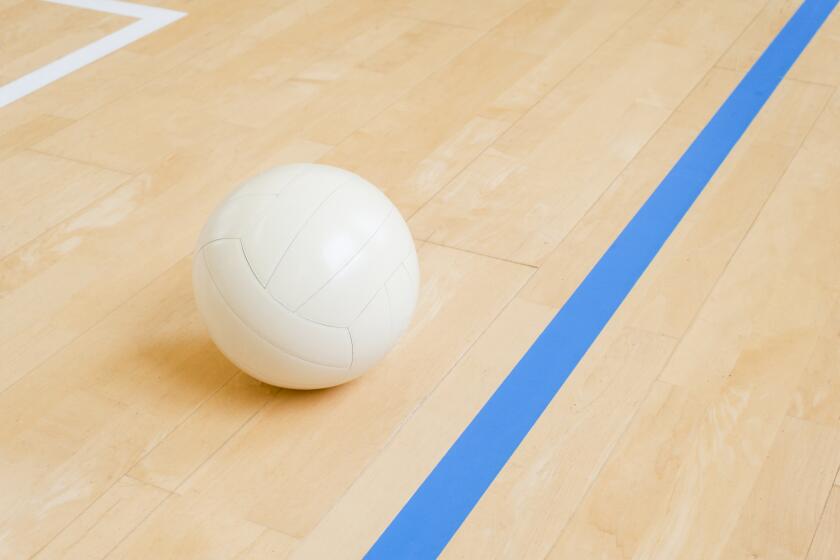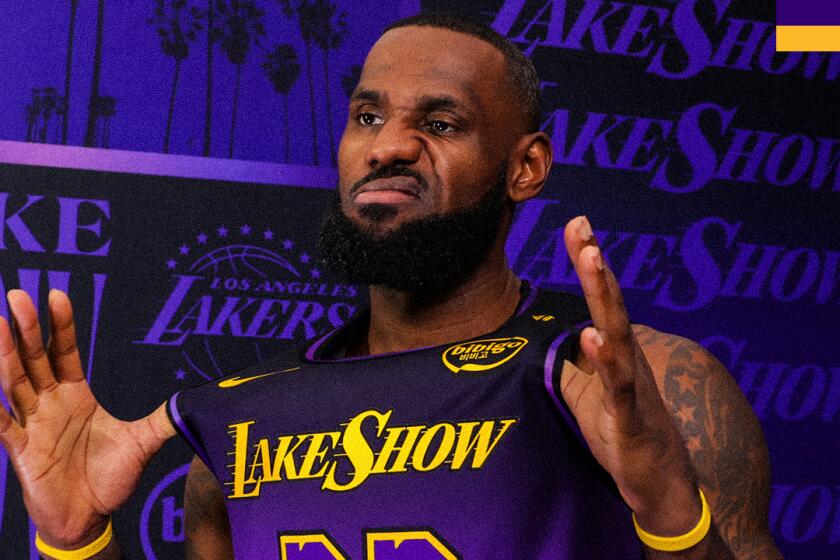Fighting for Martial Arts Readers : Rival Magazines Face Each Other on Street in Burbank
The world’s two largest publishers of martial arts magazines are located within a mile of each other in Burbank. While the rivalry isn’t as intense as, say, USC vs. UCLA or even Ninja U. vs. Kung-Fu State, there is still a sense of, “This town isn’t big enough for both of us.”
“We’re natural rivals,” said Jim Coleman, editor of Rainbow Publishing’s monthly Black Belt, the biggest-selling martial arts magazine with a circulation of 115,000. “Not only do we work in close proximity, but quite often employees from our magazine have gone to work for theirs.
“Plus, Black Belt is the largest and oldest. Everybody guns for No. 1.”
On the other side of Buena Vista Street, CFW Enterprises publishes Inside Karate, the Complete Guide to Ninja and Inside Kung-Fu, which ranks second to Black Belt in circulation. Dave Cater, editor of Inside Kung-Fu, used to work for Rainbow as Coleman’s assistant. While nobody has broken out the nunchakus and throwing stars, the magazines do duke it out, figuratively speaking.
“It’s like Time and Newsweek,” Cater said. “We both try to be the best possible, and get the stories first. We also compete for the same writers and we share the martial arts audience.”
And what kind of audience pays up to $3 for magazines that run ads for surgical steel throwing knives, satisfaction-guaranteed blow guns, 34-inch samurai swords and 25-square-foot throwing nets to “trap your opponent in a web of 100% nylon”? The majority of readers, Cater said, are boys ages 16 to 20 who perhaps want to be the first kids on their block to turn themselves into deadly weapons.
“Ours is one of the favorite magazines smuggled into prisons,” Cater said.
The magazines primarily use free-lance writers, paying them from $100 to $150 for 2,000-word stories. “You’d expect to get a lot of garbage, but we don’t,” said Russell Maynard, editor of Inside Kung-Fu. “Ninety-eight percent of what we get is poorly written, but it’s authentic. These guys know their subject matter.”
Except for their names, the magazines are virtually interchangeable. All are nearly as slick as Sports Illustrated and go in for the shock-value headlines of supermarket tabloids. Covers are invariably graphic shots of martial arts mayhem. Stories focus on martial arts philosophies and styles as well as wizened masters, legendary practitioners, fictional characters such as Rambo, “secret techniques of ancient ninja warriors” and how-to lessons in developing supernatural moves and power.
Almost always, there are articles about the late Bruce Lee. Like James Dean, Lee continues to build an audience years after his death in 1973 at age 33. “Bruce is still the tops,” Cater said. “It seems doubtful that anyone will replace him. His legend grows larger.”
Black Belt was born even before Bruce Lee began hacking his way to immortality in low-budget chop-chop movies. The first issue of the magazine appeared in April, 1961, as a 68-page booklet with only a handful of articles. It was conceived by the Uyehara brothers, who lived in Los Angeles. The first issue sold 8,000 copies and put the brothers a few thousand dollars in debt.
In 1973, Curtis Wong, a Chinese-American from Los Angeles, began publishing a local newsletter for practitioners of kung-fu, a Chinese martial art. A publishing empire grew out of that effort; in addition to three monthly magazines, CFW publishes 12 to 15 martial arts books a year. Rainbow has two other martial arts magazines beside Black Belt--Karate/Kung-Fu Illustrated and Fighting Stars Ninja--and publishes about the same number of books a year as CFW.
Inspired by their environment, the editors at the magazines, according to Coleman, often can be found staging mock assaults and doing air kicks in hallways and offices. Curiously, however, only one of the top editors at either magazine has been trained in martial arts. Maynard has a black belt in Kenpo karate, but neither Cater nor Coleman has ever taken a lesson.
“On the one hand,” said Cater, “by not having practiced any style I can remain totally objective, but then again I can’t fully understand the concepts and philosophies of what the martial artists do.”
At Rainbow, Coleman said, “People here think it’s better if the editors have no training whatsoever. But as journalists, we can absorb anything and write about it.”
Coleman may have absorbed a bit too much. During a heated pickup basketball game once, Coleman surprised himself when he came to a teammate’s defense with an impromptu flying drop kick that knocked the wind out of his victim.
“I guess there’s a certain osmosis when you see the best men in the world come into the office all the time and show off their moves,” Coleman said, “but I really don’t know what came over me.”
Over at CFW, Cater plays basketball on an outdoor basket during what he calls “recess time,” but Coleman shouldn’t expect an invitation for a little one-on-one.
More to Read
Go beyond the scoreboard
Get the latest on L.A.'s teams in the daily Sports Report newsletter.
You may occasionally receive promotional content from the Los Angeles Times.










